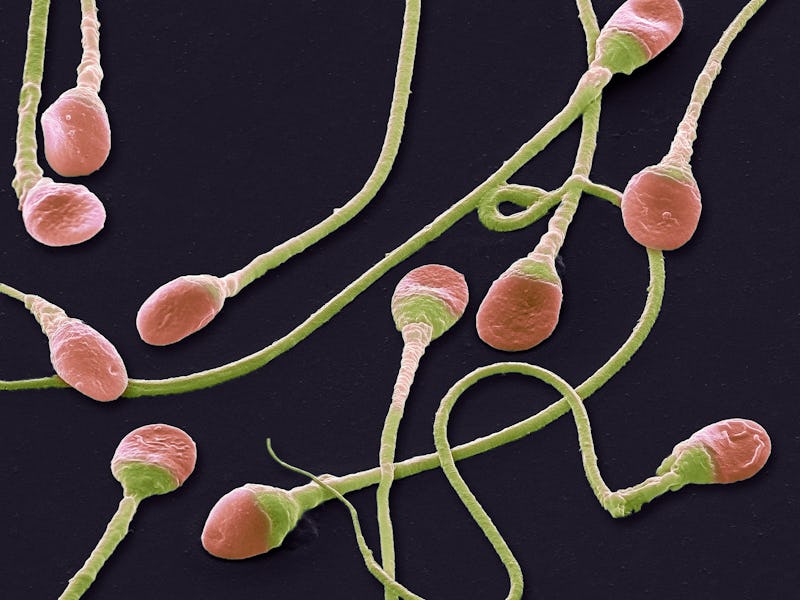Finally, scientists find the oldest sperm in the world
Old and massive.

The oldest sperm sample has been discovered.
In a paper published in September, scientists announced their breakthrough discovery, describing how, hidden in a chunk of amber, they uncovered a fossil sperm thought to be 100 million years old.
The sperm, the researchers believe, likely belonged to an ostracod — a subclass of crustaceans — which once thrived in the Earth's oceans during the Cretaceous period.
INVERSE IS COUNTING DOWN THE 20 STORIES THAT MADE US SAY 'WTF' IN 2020. THIS IS NUMBER 6. SEE THE FULL LIST HERE.
The discovery beats out the previous record by about 50 million years, which was found in the cocoon of an extinct species of Antarctic worm in 2015.
"This is the evidence that giant sperm are no extravagant whim."
Artist's reconstruction of Myanmarcypris hui in life (a mating pair).
Fossil sperm cells are notoriously hard to find, owing to the fragility and short lives of the cells. The team stumbled upon this specimen in modern-day Myanmar, fortuitously trapped in amber.
Amber-encased fossils are a boon for paleontologists. Originally the sap from trees, the fossilized remains would have become trapped in the sticky sap, which eventually formed a glass-like bead around the remains, protecting them and suspending them in time.
Thanks to this near-perfect preservation, these paleontologists were able to get a close look at the organisms inside these amber samples — and their sperm. Shockingly, the sperm cells appear to be extremely long, at least 200 microns — about four-and-a-half times the length of the body of a female ostracod. This is even more surprising given an ostracod weighs less than a raisin and is about about 1 millimeter in size.
This is an example of what is known as sperm gigantism, a phenomenon in which animals produce sperm much larger in comparison to their body size. It is thought to be an evolutionarily advantageous path to reproduction.
"This is the evidence that giant sperm are no extravagant whim,” Renate Matzke-Karasz, the second author of the study and a paleontologist at Ludwig Maximilian University of Munich, told Inverse at the time.
"Previously, we were not sure if animals that 'switched' to using these giant sperm at a certain point in their evolutionary history are doomed to become extinct very quickly," Matzke-Karasz said. "But in ostracods, it worked for more than 100 million years."
NVERSE IS COUNTING DOWN THE 20 STORIES THAT MADE US SAY 'WTF' IN 2020.THIS IS NUMBER 6. READ THE ORIGINAL STORY HERE.